Watermelon (Citrullus lanatus) is a succulent fruit plant of the gourd family (Cucurbitaceae) native to tropical Africa and cultivated around the world. Due to their refreshing taste and nutritional value, watermelons are in high demand, making them a profitable crop to cultivate. Watermelon cultivation promotes soil health through its deep root system, which helps improve soil fertility over time.
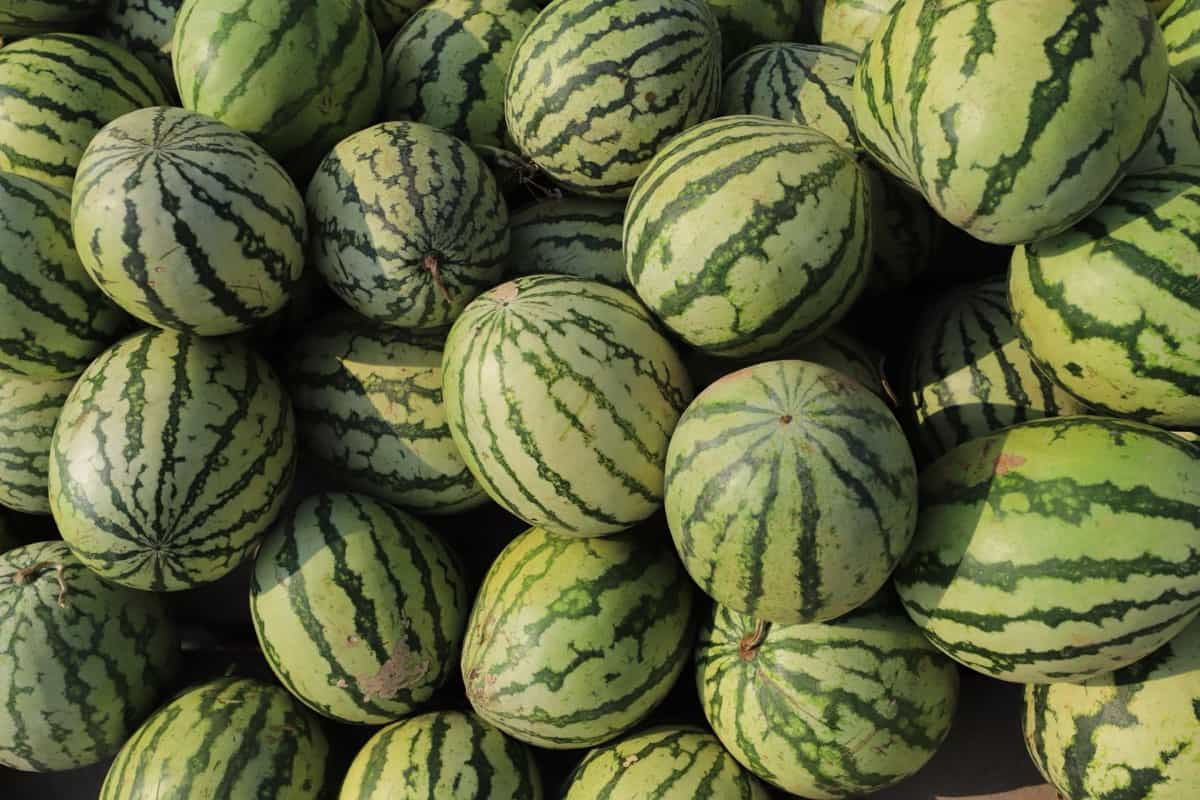
Watermelon Farming and Cultivation Practices
Commercial Watermelon Varieties and Types
There are various types of Watermelons available in the market, each with its unique characteristics and qualities. Some popular commercial varieties include Crimson Sweet, Sugar Baby, Charleston Gray, and Jubilee. Some other varieties are Little Baby Flower, Yellow Doll, Crimson Sweet, Extazy, Golden Midget, Mickylee, Asahi Yamato, Arka Jyoti, Arka Manik, Durgapura Meetha, Durgapura Kesar, Jamboree, Lemon Krush, Sangria, Sentinel, Starbright, Summer Gold and Top Gun. Choosing the right commercial Watermelon variety depends on factors like climate, soil type, market demand, and personal preferences.
How to Prepare Ground for Watermelon Plantation
Preparing the ground is key to a successful watermelon plantation. Start by selecting a well-drained area with plenty of sunlight. Clear any debris and weeds to provide a clean slate for your Watermelon seeds to thrive. Consider conducting a soil test to determine nutrient levels and pH balance. Based on the results, amend the soil with organic matter or fertilizers to optimize conditions for growth.
Remember that Watermelons require rich, fertile soil to produce sweet and juicy fruits. If your soil has poor drainage, create raised beds or mounds to prevent waterlogging during heavy rains. This will also help warm up the soil faster in cooler climates, promoting faster seed germination once planted.
Seed Selection and Germination
Choose high-quality seeds from reputable suppliers to ensure good germination rates and healthy plants. Before planting, it’s essential to test the germination rate of your seeds. This can be done by placing a seed on a paper towel in a warm location and monitoring its progress over a few days.
Once you’ve selected your top-performing seeds, it’s time to prepare them for planting. Germination is the process where the seed sprouts and begins to grow into a seedling. Ensure proper moisture levels, warmth, and oxygen supply during this critical stage to support healthy growth.
Watermelon Seed Requirement Per Acre
The number of seeds needed for planting varies based on soil quality and desired yield. For smaller-sized Watermelons, you may require around 2-3 pounds of seeds per acre. However, if you are aiming for larger fruits, you might need up to 5-6 pounds of seeds. It’s important to source high-quality seeds from reputable suppliers to ensure a successful crop. Prioritize hybrid varieties that are known for their disease resistance and high productivity.
In case you missed it: Field Preparation for Watermelon: Requirements for High Yield
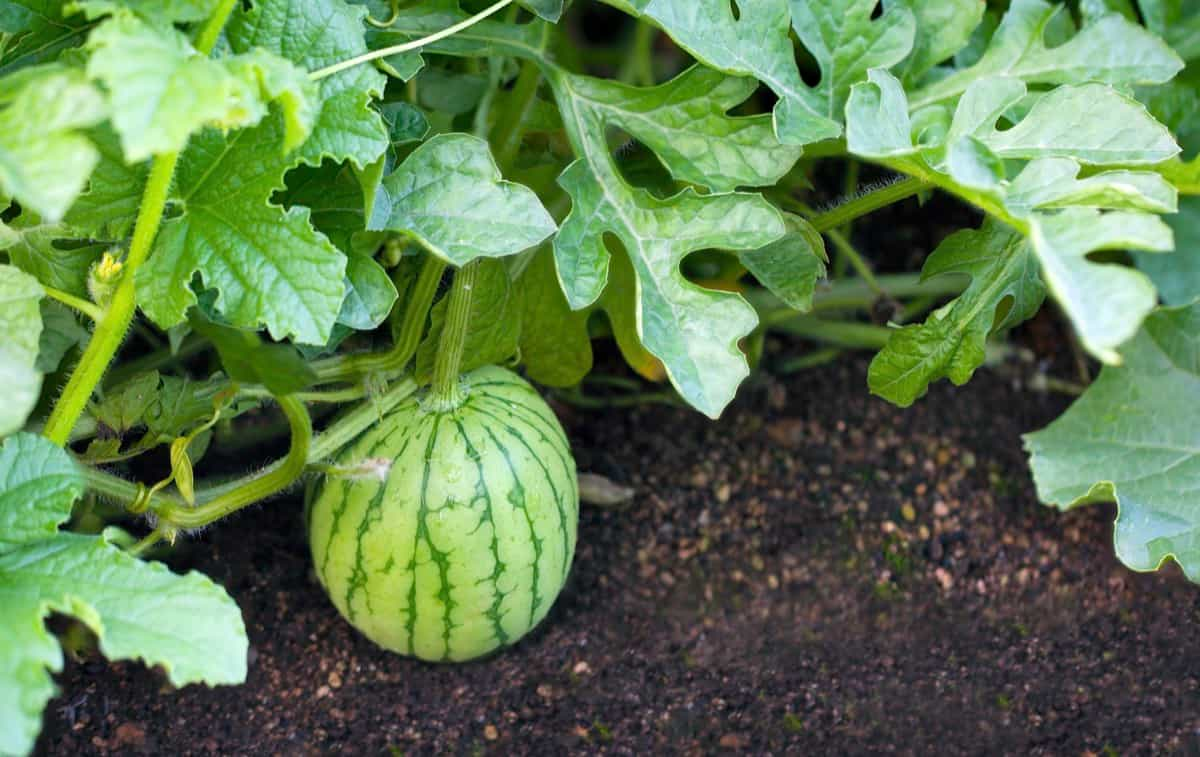
Watermelon Planting and Spacing
Proper spacing allows each plant to have enough room to thrive without competing for resources. Before planting your Watermelon seeds or seedlings, ensure you have prepared the ground adequately by tilling the soil and adding compost or fertilizer. Watermelons typically require about 2-3 feet of space between plants, with rows spaced around 6-8 feet apart. This ample spacing ensures that the vines have enough room to spread out as they grow and produce fruit. Remember that Watermelon plants are heavy feeders and need consistent watering throughout their growing season.
Irrigation Requirement and Water Management with Drip System
The effective method of water management is using a drip system. This delivers water directly to the plant’s roots, reducing waste and promoting efficient water usage. Drip irrigation helps maintain soil moisture levels consistently throughout the season, which is crucial for the development of healthy Watermelon plants. Additionally, utilizing a drip system can help prevent weed growth by targeting the root zone of the Watermelon plants specifically. This reduces competition for nutrients and allows your crop to thrive without being hindered by unwanted vegetation.
Fertilizer Requirements and Nutrient Management
When it comes to Watermelon farming, ensuring proper fertilizer requirements and nutrient management is crucial for achieving a bountiful harvest. Fertilizers provide essential nutrients that are vital for the growth and development of Watermelon plants. Nitrogen, phosphorus, and potassium are key elements necessary for healthy plant growth. Before applying fertilizers, conducting soil tests can help determine the specific needs of your crop. This information will guide you in selecting the right type and number of fertilizers to optimize plant health.
Organic fertilizers can help to promote microbial activity, enhancing nutrient availability to the plants. Regular monitoring of plant health indicators like leaf color and size can also indicate if any deficiencies need to be addressed through appropriate fertilization practices. By implementing a well-planned fertilizer regimen based on your soil’s needs, you can support robust growth in your Watermelon plants, leading to a successful harvest season.
Best Weed Control Strategies
Weed control is crucial in Watermelon farming to ensure the plants have access to all the nutrients and resources they need. One of the best strategies is mulching, which helps smother weeds and retain soil moisture. Organic mulches can be effective while also improving soil quality over time. Another effective method is hand weeding, especially during the early plant growth stages when weeds are easier to remove without damaging the Watermelon vines.
In case you missed it: How to Start Watermelon Radish Farming: A Step-by-Step Growing Guide
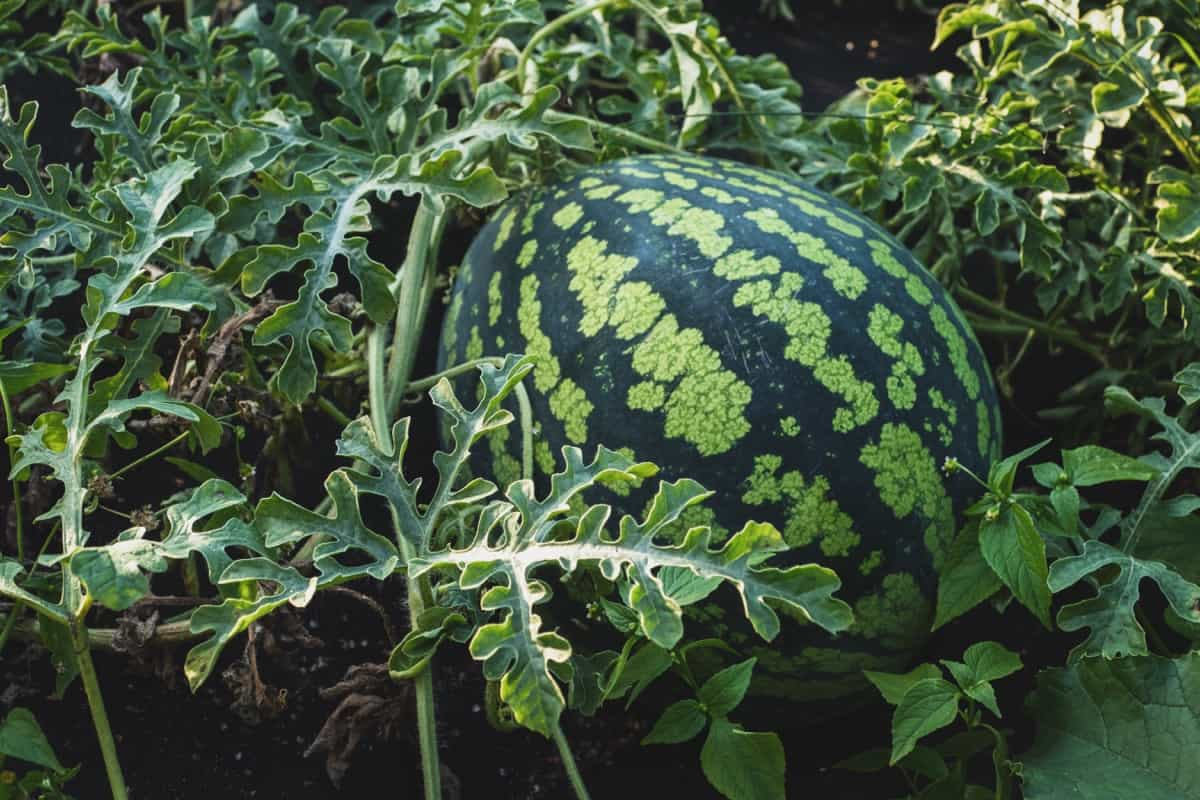
Cultivating between rows with a hoe can also help keep weed populations in check. Utilizing cover crops can outcompete weeds for space and resources while adding organic matter to the soil when turned under. Additionally, using pre-emergent herbicides before planting can prevent weed seeds from germinating, reducing overall weed pressure throughout the season.
Common Pests and Control Strategies
Some common pests that can wreak havoc on your crop if not managed effectively. Some of the most prevalent pests in Watermelon cultivation include aphids, whiteflies, and cucumber beetles. Aphids are small insects that cause stunted growth and transmit diseases. Whiteflies can lead to wilting and yellowing of leaves. Cucumber beetles chew on leaves and stems, potentially spreading bacterial wilt.
To control these pests, farmers often employ integrated pest management methods such as crop rotation, beneficial insect release, and the use of organic pesticides when necessary. Monitoring pest populations regularly is crucial to catch infestations before they cause damage to your Watermelon crop. Implementing effective pest control strategies is essential for a successful harvest and ensuring the health of your Watermelon plants throughout their growth cycle.
Integrated Pest Management in Watermelon
Integrated Pest Management (IPM) in Watermelon farming involves using a different combination of methods to manage pests effectively. This approach focuses on natural predators, crop rotation, and the minimal use of pesticides. By encouraging beneficial insects, farmers can reduce pest populations naturally.
Crop diversification is another key aspect of IPM. Rotating Watermelon crops with other plants helps break pest cycles and maintain soil health. Additionally, monitoring pest populations regularly allows farmers to intervene at the right time with targeted solutions. Implementing physical barriers such as row covers can also protect Watermelon plants from pests without relying solely on chemicals. By adopting these holistic strategies, farmers can minimize pesticide usage while maintaining healthy crop yields.
Common Diseases and Control Management
Watermelon plants are affected by various diseases that can significantly impact their growth and productivity. One common disease is Powdery Mildew, which presents as a white powdery substance on the leaves, affecting photosynthesis. To combat this, proper air circulation and fungicidal sprays can be used. Another prevalent issue is Anthracnose, causing dark lesions on vines and fruit; managing humidity levels can help prevent its spread.
Fusarium Wilt is a soil-borne fungus that attacks the plant’s vascular system, leading to wilting and death. Crop rotation and resistant varieties are effective control measures against this disease. Additionally, Gummy Stem Blight causes vine lesions and fruit rot; sanitation practices like removing infected plant debris can mitigate its impact. Regular monitoring for disease symptoms is crucial for early intervention to protect your Watermelon crop from devastation.
Watermelon Vine Training and Support
As the vines grow, they need proper guidance to ensure optimal fruit development. Training the vines involves gently redirecting them along a trellis or support structure to prevent them from sprawling all over the ground. This not only saves space but also promotes air circulation around the Watermelon plants, reducing the risk of diseases.
In case you missed it: How to Grow Watermelon from Seed to Harvest: Check How this Guide Helps Beginners
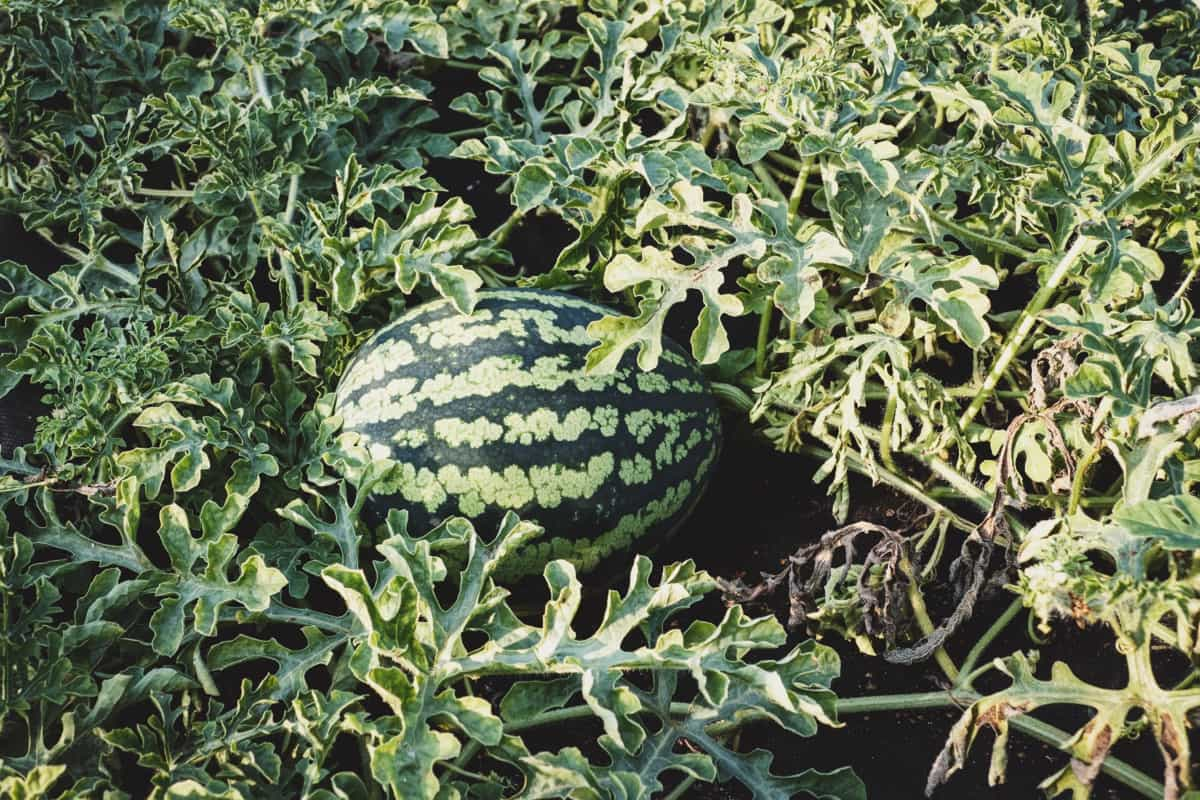
Supporting the Watermelon vines is essential to prevent them from breaking under their weight as they produce large fruits. Using materials like twine or fabric strips, carefully tie up the vines to keep them upright and stable. This practice also helps distribute nutrients more evenly throughout the plant, leading to healthier growth and better fruit quality. Properly managed vines result in higher yields and superior-quality fruits that are sure to impress both you and your customers.
How to Pollinate Watermelon Vines
Pollinating Watermelon vines is a crucial step in ensuring a bountiful harvest. To effectively pollinate your Watermelon plants, consider attracting pollinators like bees to your garden by planting bee-friendly flowers nearby. Additionally, you can hand-pollinate the flowers using a small brush or cotton swab.
When the male and female flowers are open simultaneously, gently transfer pollen from the male flower’s stamen to the female flower’s stigma. This manual process mimics natural pollination and increases the chances of a successful fruit set. Be attentive to factors like temperature and humidity that may affect pollen viability and bee activity.
How to Boost Female Flowers in Watermelon Crop
If you’re looking to boost the number of female flowers in your Watermelon crop, there are a few simple tips you can follow. One effective method is to provide adequate sunlight for your plants, as they require plenty of light to encourage flower production. Additionally, ensuring that your plants receive sufficient nutrients through proper fertilization can also help promote the growth of female flowers.
Another technique is hand pollination, where you can transfer pollen from the male part of the flower to female flowers using a small brush or cotton swab. This manual intervention can increase the chances of successful pollination and fruit set. Moreover, avoiding stress factors such as fluctuations in temperature or inadequate watering can help encourage more female flower development.
Steps to Pruning and Thinning of Watermelon Vines
Pruning and thinning Watermelon vines is a crucial step in ensuring a bountiful harvest. Start by identifying the main vine and side shoots – remove any excess side shoots to redirect energy toward fruit development. Regularly check for overcrowding and prune accordingly, allowing for better airflow and sunlight penetration. Be gentle when pruning to avoid damaging the vines.
In case you missed it: Top 20 Steps to Boost Watermelon Yield: How to Increase Fruit Size, Quality, and Production
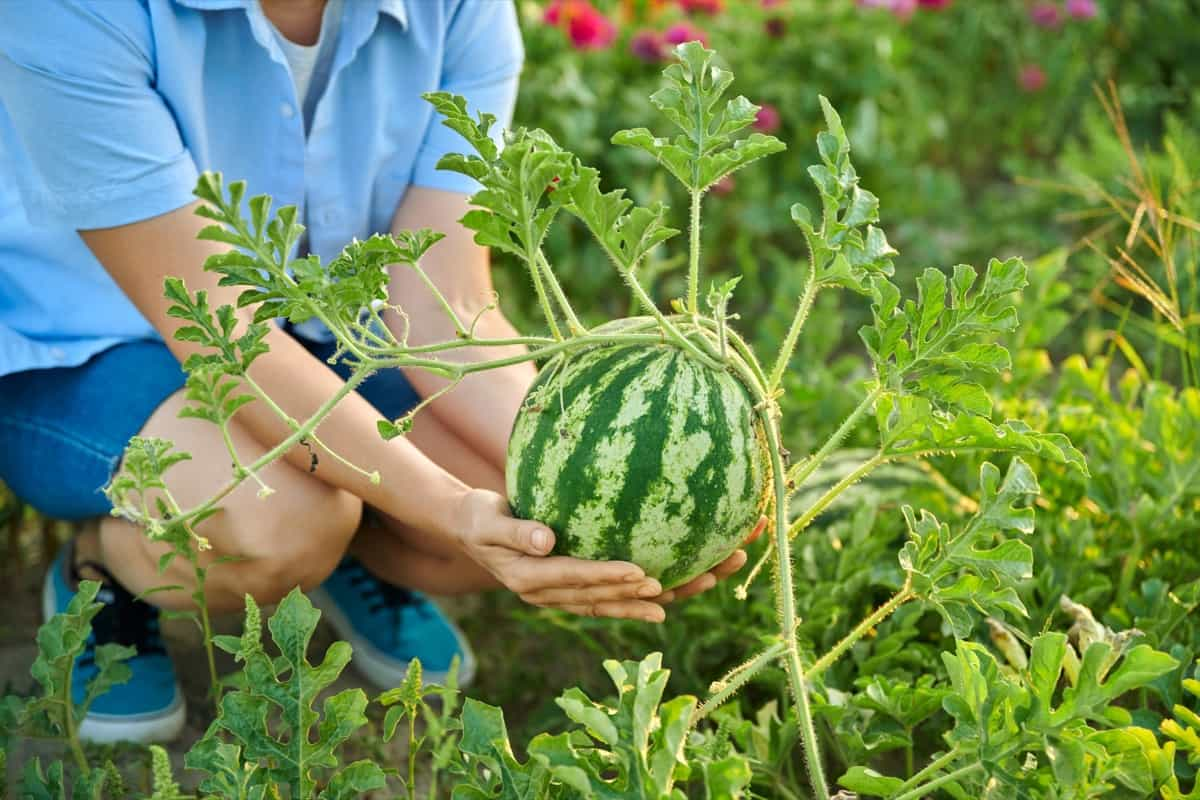
Thinning involves removing smaller or misshapen fruits to promote the growth of larger, healthier ones. This process helps prevent competition among fruits and ensures uniform ripening. Remember to use clean, sharp tools to minimize stress on the plants. Prune selectively based on plant health and growth patterns rather than following a strict schedule.
When and How to Harvest Watermelons
Generally, Watermelons are ready to be harvested when they reach full maturity, which can vary depending on the variety and growing conditions. As a rule of thumb, most Watermelons are ready to be harvested 75-80 days after planting. One way to tell if a Watermelon is ready for harvest is by looking at the tendril closest to the fruit – if it’s dried up and turned brown, your melon is likely ripe.
Another method is by examining the spot where the melon rests on the ground – if it changes from white to a creamy yellow color, that’s a good sign that it’s ready to be picked. And, of course, there’s always the classic thumping technique – a ripe Watermelon should sound hollow when tapped.
Once you’ve determined that your Watermelon is indeed ripe, it’s time to carefully cut it from the vine using shears or a sharp knife. To harvest your Watermelon, use a sharp knife or shears to cut through the stem about an inch above where it connects to the fruit. Be gentle with handling them as they can be quite delicate.
Expected Average Yield of Watermelon per Acre
Watermelon farming is a rewarding venture with the potential for high yields per acre. The expected average yield of Watermelons can vary depending on soil quality and proper cultivation practices. On average, a well-managed Watermelon farm can yield around 25,000 to 60,000 pounds of Watermelon per acre. To achieve optimal yields, it is crucial to follow recommended planting techniques to provide adequate irrigation and nutrient management throughout the growing season.
Post-Harvest Management of Watermelons
Proper post-harvest management is crucial to maintaining watermelons’ shelf life after harvest. Start by sorting the Watermelons based on size, shape, and ripeness. This helps categorize them for different markets or storage purposes. Next, wash the Watermelons with clean water to remove any dirt or debris from the surface. Ensure they are dried properly before storing them to prevent mold growth.
In case you missed it: How to Protect Indoor Plants in Winter: A Comprehensive Guide
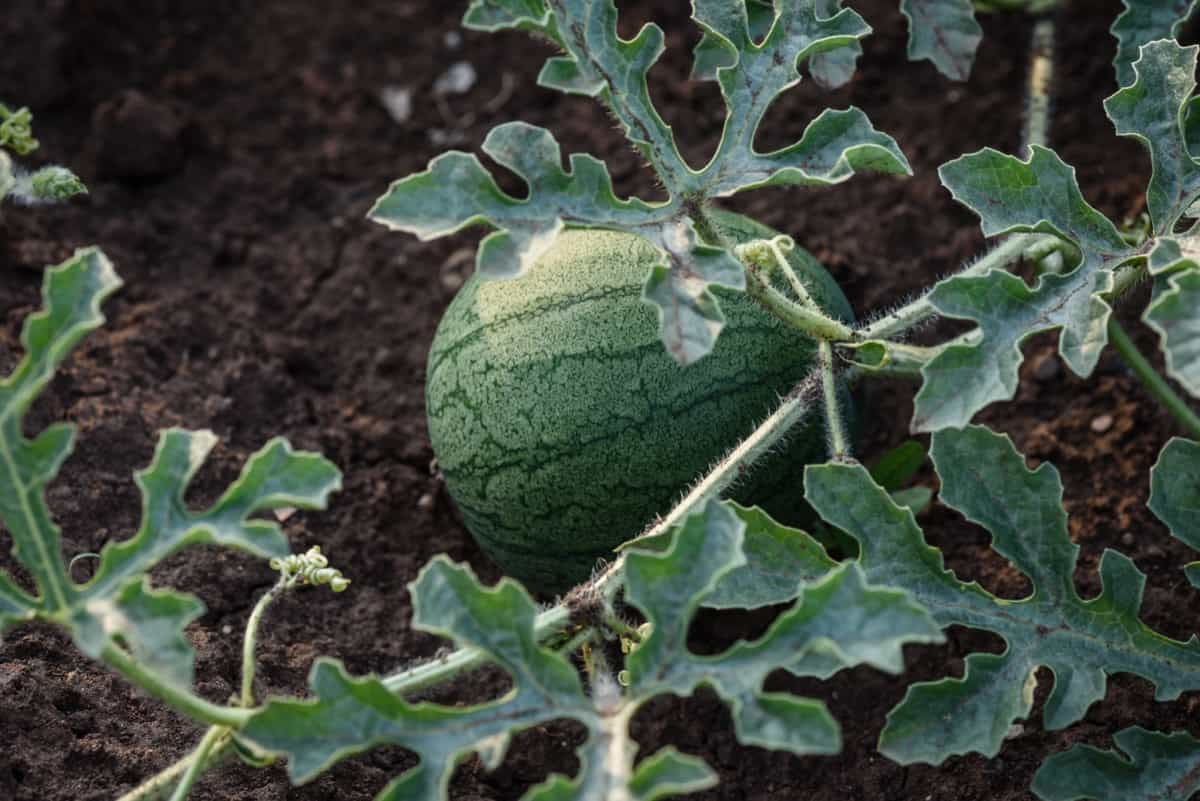
Store the Watermelons in a cool and dry environment to slow down ripening and preserve freshness. Regularly check for spoilage signs, such as soft spots or mold growth. Rotate the stock regularly to ensure that older fruits are sold first or consumed before fresher ones. Proper post-harvest management practices can significantly impact the overall quality of your Watermelon produce and increase consumer satisfaction.
Conclusion
Watermelon farming is an agricultural practice focused on cultivating Watermelon plants for their juicy and refreshing fruits. Watermelon farming offers numerous benefits, including a high demand for this popular fruit in markets worldwide. The importance of Watermelon farming lies in its economic viability for farmers, as it can generate significant income when managed effectively. Additionally, Watermelons play a crucial role in food security by providing a nutritious option for consumers globally.
- Economical Aquaculture: A Guide to Low-Budget Fish Farming
- 15 Common Planting Errors That Can Doom Your Fruit Trees
- How to Make Houseplants Bushy: Effective Tips and Ideas
- Innovative Strategies for Boosting Coconut Pollination and Yield
- Pollination Strategies for Maximum Pumpkin Yield
- The Complete Guide to Chicken Fattening: Strategies for Maximum Growth
- Natural Solutions for Tulip Problems: 100% Effective Remedies for Leaf and Bulb-Related Issues
- Revolutionizing Citrus Preservation: Towards a Healthier, Greener Future
- Natural Solutions for Peony Leaf and Flower Problems: 100% Effective Remedies
- Maximizing Profits with Avocado Contract Farming in India: A Comprehensive Guide
- Natural Solutions for Hydrangea Problems: 100% Effective Remedies for Leaf and Flowers
- The Ultimate Guide to Choosing the Perfect Foliage Friend: Bringing Life Indoors
- From Sunlight to Sustainability: 15 Ways to Use Solar Technology in Agriculture
- The Ultimate Guide to Dong Tao Chicken: Exploring from History to Raising
- The Eco-Friendly Makeover: How to Convert Your Unused Swimming Pool into a Fish Pond
- Mastering the Art of Delaware Chicken Farming: Essentials for Healthy Backyard Flocks
- 20 Best Homemade Fertilizers for Money Plant: DIY Recipes and Application Methods
- How to Craft a Comprehensive Free-Range Chicken Farming Business Plan
- Brighten Your Flock: Raising Easter Egger Chickens for Beauty and Bounty
- How to Optimize Your Poultry Egg Farm Business Plan with These Strategies
- Subsidy for Spirulina Cultivation: How Indian Government Schemes Encouraging Spirulina Farmers
- Ultimate Guide to Raising Dominique Chickens: Breeding, Feeding, Egg-Production, and Care
- Mastering the Art of Raising Jersey Giant Chickens: Care, Feeding, and More
- Ultimate Guide to Raising Legbar Chickens: Breeding, Farming Practices, Diet, Egg-Production
- How to Raise Welsummer Chickens: A Comprehensive Guide for Beginners
- How to Protect Indoor Plants in Winter: A Comprehensive Guide
- Ultimate Guide to Grow Bag Gardening: Tips, Tricks, and Planting Ideas for Urban Gardeners
- Guide to Lotus Cultivation: How to Propagate, Plant, Grow, Care, Cost, and Profit
- Agriculture Drone Subsidy Scheme: Government Kisan Subsidy, License, and How to Apply Online
- Ultimate Guide to Raising Araucana Chickens: Breed Profile, Farming Economics, Diet, and Care
- Bringing Hydroponics to Classroom: Importance, Benefits of Learning for School Students
- Ultimate Guide to Raising Polish Chickens: Breed Profile, Farming Economics, Diet, and Care
- Ultimate Guide to Raising Australorp Chickens: Profile, Farming Economics, Egg Production, Diet, and Care
- Silkie Chicken Farming: Raising Practices, Varieties, Egg Production, Diet, and Care
- Sussex Chicken Farming: Raising Practices, Varieties, Egg Production, Diet and Care
- Homemade Feed Formulations for Livestock: Discover Cost-effective Starter to Finisher Feed Recipes
This is wonderful post.
In addition, farmers should ensure they spray lime in their farm. This will provide the watermelon plant with enough calcium that will prevent bottom end rot caused by calcium deficiencies.
Also, ensure you are careful when weeding your farm with mechanical instruments to avoid bruising the young fruits. The fruit may rot from that point.
One more thing to look out for is the gummy step blight disease. It is a fungal disease that softens the rind of watermelon and often leaves a black spot at the point of rot.
Please I want to buy watermelon seed for planting.
Actually I had red the Watermelon literature which made me comfortable. Myself I want to grow the crop, and I need the hardcopy of this literature, how may I got it?
Sir I have capsicum in my farm, if there are requirement then please let me know
Thanks
I also have watermelon and we will be harvesting in the month of May, if required, please let me know.
Thanks
I have planted water melon in Makkah. Its green long type and now its about 3 weeks. Can some body please help me, problem is that after some days the end of the fruit becomes black and slowly shrink in that area. Please give the suggestion to overcome this problem. How to protect the fruit from bugs and beetles.
Thanking you,
i’ve always wondered how to grow watermelon? and made conclusion Every gardener should plant a hill or two of watermelons as they are easy to grow and, oh so good on sultry summer afternoons.
it could be very easy with people to help in farm and advanced farming machine technology
i just start planting…
I find the post interesting, but how can the pests and fungi be controlled?
Please tell me on how to stop pest and fungus growth
This information on growing watermelon as well as the health benefits is fascinating. It has inspired me the ambition to planting my own watermelon crop. If I can get a hard copy of this information, it would be helpful to me a lot.
thanks for the information on how tog grow water melon and it inspired me please keep updating
What is the right amount of water per plant.please can anybody help?
How much a cost of a seed and where can I get a market of watermelon?